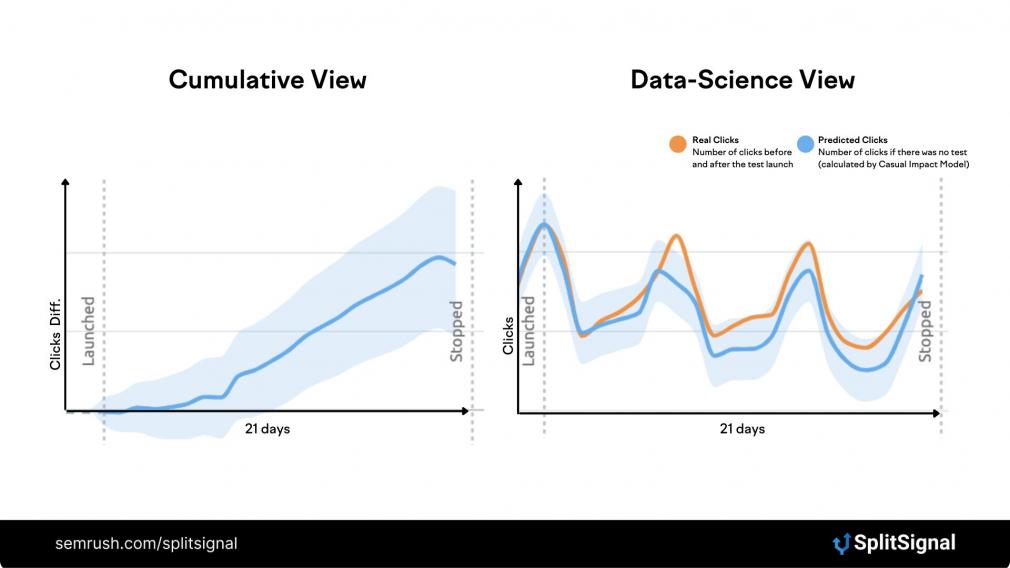Greetings, SEO aficionados! Do you have breadcrumbs on your website? Do you know someone who does? Have you ever seen a breadcrumb (and wondered how easy it could be to use them to improve your websites’ organic traffic)? Then read on — we all love easy wins!
Over the last few quarters, we engaged with a major retailer of online alcohol to test a hypothesis. This particular retailer had their breadcrumbs set up like this:
Their Brand / Liquor / Whiskey / Bourbon / Blanton’s Single Barrel Bourbon
A few important items to clarify.
This is a product page on a marketplace website selling a single item. The breadcrumb links are all linked to category-level pages featuring the taxonomically organized products, as you would expect.
Also, this particular website has between 600,000–1,000,000 monthly organic visitors.
Table of Contents
Hypothesis
Now, the hypothesis. A very clever SEO professional hypothesized that removing the last breadcrumb, “Blanton’s Single Barrel Bourbon” would have a positive impact on organic traffic to the website’s product pages.
The Test
So, we set up a test. A percentage of the product pages within the site were randomly selected as the test variant, while most of the product pages would serve as the control group.
In SplitSignal, we set up our client-side SEO testing tool to remove the end of all of the breadcrumbs after the last taxonomy page. In other words, remove the product’s name from the tail end of the breadcrumbs.
The Results
SplitSignal ran this test over 21 days and what we found was a statistically significant, POSITIVE result for the client. More specifically, there was an 8.7% increase in organic traffic to the test group, when compared to the control over the same time period!
Savvy SEO champions might be asking themselves “Well, how many of the test and control pages did Googlebot recrawl during the testing period?” The answer is 97%.

image credit: semrush
The end result is a highly statistically relevant result that is not only significantly reflected in organic traffic to the test pages but revenue as well. We’ll drink to that!
Why?
What we found was not only an increase in organic traffic to the test group, but we can quantify that a little more for you. There was a relevant increase in click-thru rate (CTR), actual clicks, AND impressions reported in Google Search Console.
So what’s going on here?
This particular test affected a number of different on-page elements which could have individually, as well as in combination with each other, affected the positive end result:
-On many of the affected pages, the product name also includes the type of alcohol it is. As the pages also repeat the type of alcohol, in this instance “bourbon”, many times, reducing the number of mentions of the keyword across the test group brought those pages more in line with what Google would consider a “good” page and therefore, the pages received a ranking boost.
-The visible breadcrumb was removed, but the Schema breadcrumbs were left as-is. While we don’t personally think Schema manipulation is a good practice, this incidental oversight might indicate a slight preference for Schema over on-page elements.
-Many of the product names were long and caused the breadcrumbs to wrap down a line on mobile devices. This may have resulted in usability improvements with font-sizing, readability, and other “above-the-fold” considerations.
-The CSS for the breadcrumbs was originally set to change the color and other font decorations for the last breadcrumb. This may have influenced Google to consider the new taxonomic term (rather than product name) to be more important.



